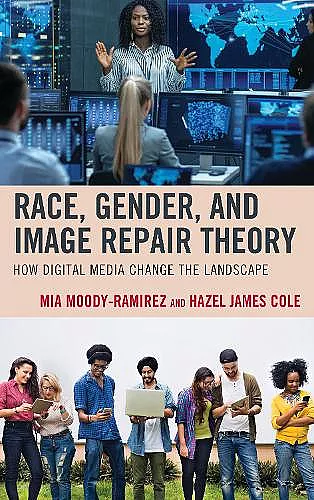Race, Gender, and Image Repair Theory
How Digital Media Change the Landscape
Mia Moody Ramirez author Hazel James Cole author
Format:Paperback
Publisher:Bloomsbury Publishing PLC
Published:11th Aug '20
Currently unavailable, and unfortunately no date known when it will be back
This paperback is available in another edition too:
- Hardback£95.00(9781498568616)

Race, Gender and Image Restoration Theory: How Digital Media Change the Landscape explores themes that are relevant to the socio-political landscape of twenty-first-century America, including race and gender representation, social media and traditional media framing, and image restoration management. This book provides a comprehensive discussion of Critical Race Theory (CRT) and Image Restoration Theory (IRT) to establish a baseline for a conversation on celebrity image restoration tactics used on social media platforms such as Twitter and Facebook as well as traditional media platforms. Case studies offer a broad overview of politics, sports and entertainment image management and restoration. Recommended for scholars interested in public relations, crisis management, Image Repair Theory (IRT), and representations of race and gender in mass media.
This is a timely book for understanding contemporary communication with several virtues. First, it provides an interesting combination of critical race theory and image repair theory. Second, it investigates social media along with traditional media, another useful advance. Third, the book offers several interesting case studies to illustrate and apply their approach.
-- William L. Benoit, University of Alabama, BirminghamIt’s about time. There is not a book of this quality that pulls in the various strands of diversity, critical theory, social media, discourse, and brand/personal apologia. Critical race theory is a neglected but vital area of scholarship within social media and image repair areas. This book fills a gap with its relevant cases, timely discussion, and appropriate application of image repair theory. Within the communication discipline, issues of race, gender, and image repair are not connected and are out of sync with the current conversations happening. It would seem that these strands of thought would be incompatible, but this book merges these areas in a seamless, well-written way. Students and media professionals need to understand that the connective tissues between these theories are popular culture and mediated communication, and this book does that. This book and its cases are valuable for scholars and will be a needed conversation starter in undergraduate and graduate courses. -- Natalie T. J. Tindall, Lamar Univer
ISBN: 9781498568630
Dimensions: 220mm x 153mm x 15mm
Weight: 386g
240 pages